
Out of all the surfaces in your home, couches probably gather dirt and get stained the most. After all, the entire family sits on the couch and sometimes even eats on it. If you have pets, they will surely cuddle up on the couch beside you, too. All this fun eventually results in crumbs, hair, pet stains, and a general mess all over the couch.
Since they are such a frequently-used piece of furniture, couches and armchairs must be cared for regularly. Wiping down the surface at least once a week will keep them looking great for much longer. Keeping these items of furniture clean is also quite important for your personal hygiene. However, cleaning a couch can be tricky. Every material calls for a different method, and no one wants to ruin their couch. To make this easier, we rounded up a number of expert-approved cleaning tips for 8 different upholstery materials - from linen to leather.
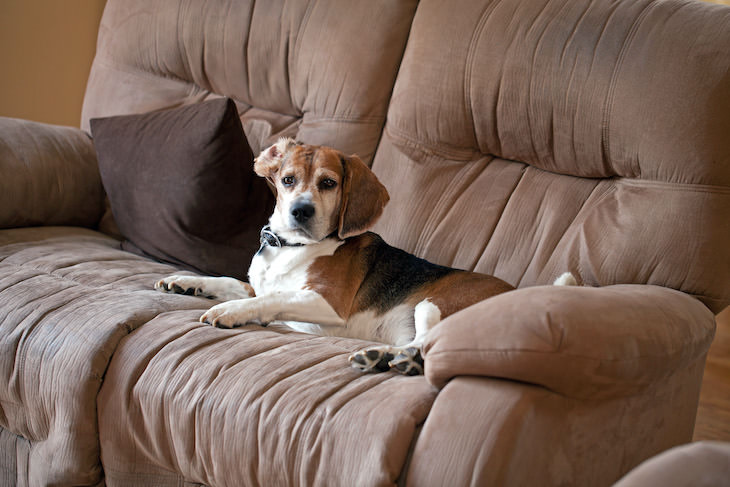
Cleaning microfiber can be tricky. This soft cushy material is made from a synthetic blend of materials, and your cleaning approach should vary depending on the specific blend. That’s quite simple to find out - take a look at the care label or fabric tag for the cleaning code. The codes are as follows:
If you’re attempting to remove a stain, cleaning experts recommend blotting the material first. To do so, use a clean cloth to lift the dirt and stains. Then spray the surface with the solution you need, according to the care label. The spot you’ve treated may look different but don’t worry, there is one final step. To restore the fuzzy surface of the fabric, use the scrubby side of a non-scratch scrub sponge and work in a simple S pattern. This simple trick will restore the fabric, and your couch will be as good as new.
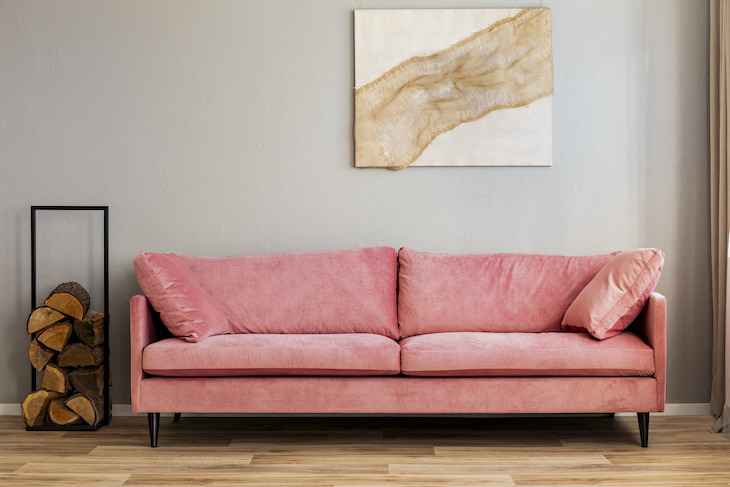
Velvet never fails to add a luxurious touch to your home. For upholstery, synthetic velvet is more popular than the cotton variety because it’s less expensive and easier to keep clean. According to Brian Sensoni, the senior vice president of the American Cleaning Institute, the best way to clean a velvet couch is to start by vacuuming up dust with a soft brush attachment. The brush will help prevent scratches. “When your velvet gets crease marks or compresses with wear, you can use a handheld steamer or the steam setting on an iron against the grain,” he told Reader’s Digest.
No one wants stains on their velvet couch, so if you need to remove one, just blot (but don’t scrub) the area until it’s no longer wet. You can then use soapy water to remove the rest of the stain, maintaining the blotting method.
Lastly, to prevent your velvet furniture from fading, it’s best to keep them away from direct sunlight.
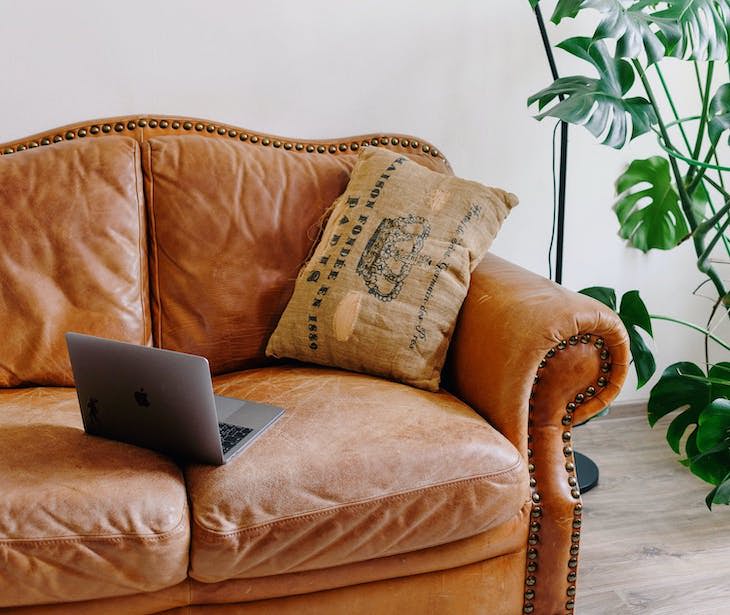
The good thing about leather sofas, besides how beautiful they look, is that they’re quite easy to clean. Start by gently removing any crumbs or dirt from the surface of the couch, using a dry microfiber cloth or the brush attachment of a vacuum cleaner. Next, wipe down the leather with a damp cloth. Preferably, use distilled water to avoid chlorine that can be found in tap water.
When cleaning genuine leather, it’s important not to use too much water and to make sure that you are thoroughly drying the couch after cleaning.
Related: Tips to Fluff Up Your Sofa Cushions
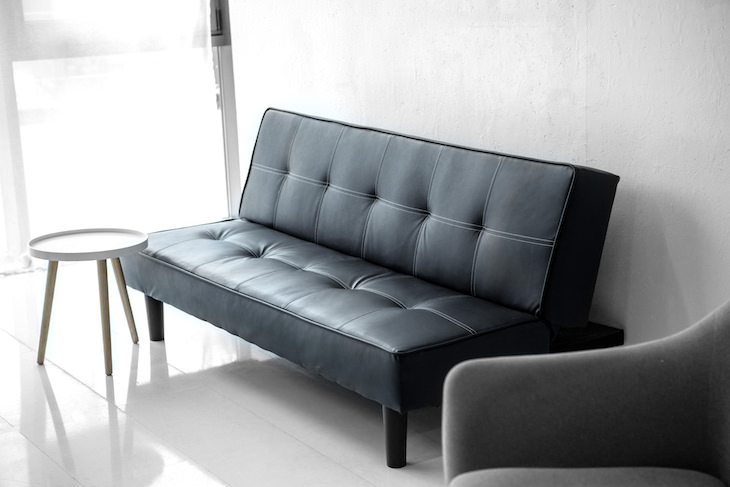
The process of cleaning faux leather is similar to that of genuine leather. Begin by vacuuming the surface in order to remove crumbs and debris.
After vacuuming, prepare a cleaning solution by mixing dish soap and warm water. About two tablespoons of soap per gallon of water should do the trick. “This solution is preferred over chemical cleaners, as chemicals can easily damage the fabric or make it stiffer,” explained Leanne Stapf, a chief operating officer for the Cleaning Authority. Dampen a cloth with a solution and gently wipe down the couch. Afterward, repeat the process with a rag that only contains water to remove any soap, and finish by drying off the couch.
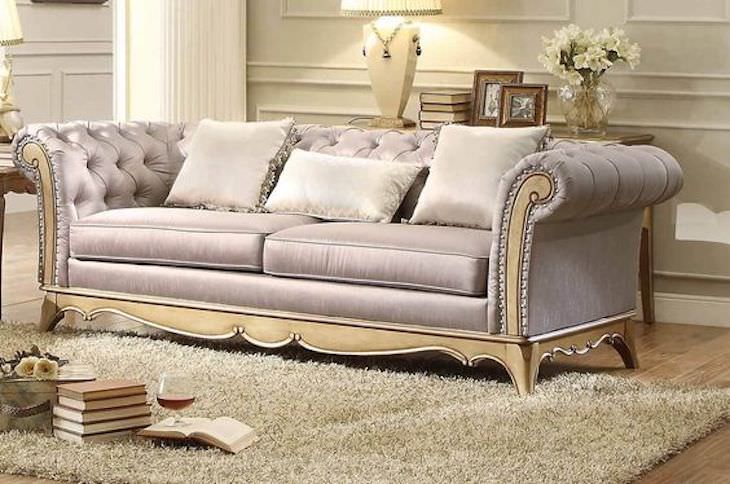
Silk couches aren’t very common, mostly because this delicate fabric is notoriously hard to keep clean. Silk-covered throw pillows, however, are much less of a rare sight. Because silk requires very gentle care, it’s recommended to have silk couches and pillows cleaned professionally.
If you prefer to clean your silk furniture and accessories by hand, it’s possible to do so using a soft cloth and a mild detergent. However, it is best to test a small, hidden section first, to make sure the solution doesn’t fade or damage the fabric. To stay on the safe side, do make sure you are using gentle upholstery-specific products.
Related: 8 of the Dirtiest Household Items and How to Clean Them

Synthetic fabrics used for couches vary greatly. The most popular options are acrylic, polyester, nylon, and olefin. Since there is so much variation in terms of fabric and finish, experts recommend starting with basic soapy water or a mild detergent and testing it in a small, hidden area. If a more thorough cleaning is needed, find a detergent that is upholstery-specific. When it comes to synthetic fabrics, you don’t need to use much detergent - ‘less is more’ is the best approach in this case.

Linen has natural heat and moisture-absorbing qualities. On top of its practicality, it can look very beautiful and sophisticated - no wonder linen is such a popular upholstery option.
Regularly vacuuming this type of couch is important to prevent dust and other messes from digging into the weave of the linen. Aim for about once a week. Generally, dry cleaning is the best way to go if you want to be thorough, though some linen fabrics can be cleaned in the washing machine, using cold water and a gentle spin cycle. If you opt for this method, hang dry the covers and place them back on the sofa when they’re almost dry, so that they can stretch and fit the shape of the cushions better.
One important tip to remember - avoid rubbing stains or spills on a linen couch, as it will only press them deeper into the fabric. Instead, use a clean, slightly damp cloth to soak up a spill.
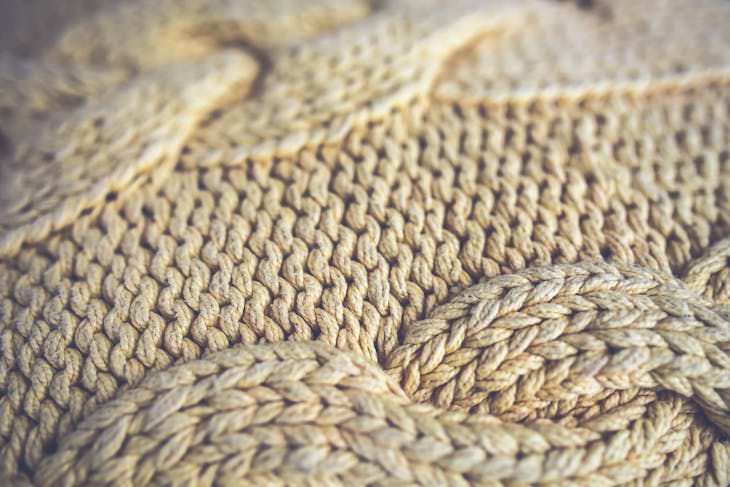
Wool is a popular upholstery material because it’s durable and waterproof while also being soft to the touch and giving an overall cozy feeling to the interior. To clean wool, start by vacuuming up any loose dirt, then use a water-based detergent, preferably one that is specifically recommended for wool. It’s always better to dilute the detergent with water to make rinsing easier. Finally, use a clean, damp cloth and avoid scrubbing while removing cleaning solution residue.
If the label says that the wool covering is washing machine safe, remember to turn it inside out before you pop it in.
Share these useful tips with someone who would appreciate them